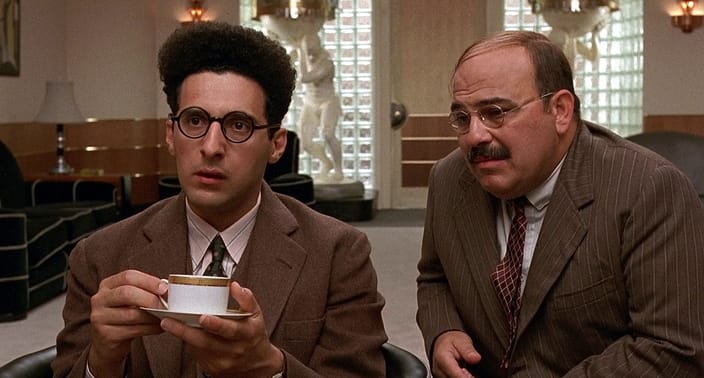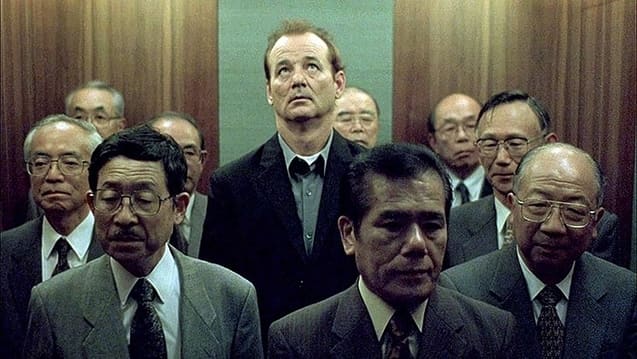It’s any screenwriter‘s fantasy to come across an acclaimed director or producer out of the blue and pitch them their passion project. Enter the infamous elevator pitch.
Chances are, of all the possible places this could happen, it won’t likely be in an elevator. But, no matter the circumstances, you’ll have only a short window of time to say what you want to say.
The brevity of an elevator pitch is a good practice in appealing to the short attention span of modern media. Many industry readers won’t continue past the first few pages if they aren’t intrigued by what they read, if that. So the primary key to an elevator pitch is to condense your script idea into something palatable and intriguing.
However, many writers fail to consider how the task of constructing a strong pitch can challenge and confront the strength of the screenplay itself. In this way, the elevator pitch functions as a step in the rewriting and revising process, one that tackles the biggest questions the story centers on.
Table of Contents
So without further ado…
What Is the Importance of Pitching?
Pitching is all about the sale.
Even writers have to eat. In order to do so, they have to actually sell their scripts, and in order to do that, they have to convince a director, producer, or investor of some sort to first look at the script, then ultimately invest in it.
So how do you persuade others that your story is worth their money or time? By telling them the best, most interesting aspects of your story – as quickly as possible.
Essentially, your story needs to stand out to someone who has never laid their eyes on a single page of it.
This is a tall order, and to effectively execute it requires a great deal of preparation, as well as an understanding of what makes for a strong pitch. You, as the pitcher, have to find a balance between what you anticipate the pitchee will want to hear and what is most important for them to know about what you are pitching them.
There are tons of great ideas out there, but the difference between those that get noticed and those that don’t is the effectiveness of the communicator. So pitching, and especially mastering the briefest pitch form of all, is crucial to a writer’s livelihood.

What Should Your Elevator Pitch Include?
In your elevator pitch, you’ll be exploring the bare bones of your story. It’ll include the most basic details of your story, plus some flourish to spark your listener’s interest. It should include:
Your personal connection. Why are you telling this story? Explain why you are passionate about this topic, and what makes you enough of an authority on it to voice it to the world. This emotional hook is the hidden key behind any great story, be that in pitch, screenplay, or on-screen form.
The concept/genre. Give them a glimpse into the world, tone, and journey you are going to showcase. It will set up important context for the rest of the pitch.
The protagonist. Who are we following in this story? What makes them interesting, both on their own and within the situation you’ve put them in? Any story is inherently weakened if the main character is not compelling enough. Also, similar to how you will justify your personal connection, touch on why your protagonist is the one the story is centered on, rather than anyone else in the script.
The plot. What happens in the story? How do events and characters affect actions and reactions? Take them through the most important and consequential events of your story, ideally the ones that most impact the protagonist‘s character arc. NOTE: You should not be going through every beat of your story, nor should you reveal the ending. Keep it at the most important moments, and leave them wanting to know more.
A common way to format an elevator pitch is by giving a brief explanation of your personal connection, very quickly stating the genre or tone, then delivering a logline. This logline should address the protagonist and the plot insofar as it details the stakes, the general conflict, and perhaps even the primary character arc.
IMDb is ripe with logline examples. Look there for your favorite movies to see how they touch on the list items above, and how that lines up with the story as you know it. Then look to your own screenplay and wonder how that would apply for your story.
Now, this is not a strict template. Read the room and determine how much more information you think you can safely get away with. If there’s room, you can expand ever so slightly on the plot and even discuss your antagonist, if you haven’t already.
It is very important to know where your elevator pitch should stop. Play it safe so as not to exhaust or annoy your listener, who is already doing you a big favor by giving you their time. Besides, you tell them every little thing that happens, they no longer have a reason to read it.
Remember, if the person you are pitching to is interested to learn more, then you can expand into further details. The challenge here is to tackle the most important parts.
How Can Your Elevator Pitch Help Your Story?
This may sound backwards but trust us.
Sometimes the question that writers struggle most to answer about their own story is: What is it really about? That’s to say, what is the message you are trying to get across with this combination of characters and events?
The weak spots in screenplays can come from a writer not focusing enough on what lies at the core of the story. You may find unnecessary scenes and dialogue in place of true consistency with your theme. This may mean that you need to do some soul-searching for your story and determine what you are trying to say – and whether you’re actually saying it.
Your elevator pitch might reveal to you the structural weaknesses in your story. Perhaps the stakes aren’t high enough, or the characters aren’t interesting enough, or the resolution isn’t satisfying enough. Oftentimes the culprit here is an emphasis on plot rather than story (and there is a difference). Your plot will not be smooth until you first figure out what the story is, then how the plot can serve the story.
After you construct your elevator pitch, go back into your story and look for areas where your story doesn’t stay true to what it’s really about. In particular, identify your big important scenes (you should have a small handful and no more). If the essence of your elevator pitch is not present in these scenes, it’s time for a revision.
Coming up with an elevator pitch is kind of an exercise in screenplay soul-searching. Though the sales aspect of it is very important, especially if you’ve got bills to pay, where it really pays off on a craft level is in what it reveals to you about your own story.

How Should You Go About Your Elevator Pitch?
The ultimate goal of pitching is to give your project a chance at life. The whole point of writing screenplays is to, hopefully, bring them to the screen. Presenting it the right way to the right person is what will make that happen.
The elevator pitch is the shortest form of pitch, so you have to be extremely resourceful. You have to ask yourself: What are the things that are simultaneously the most integral and the most gripping aspects of your story?
If you are a visual thinker, approach it as a Venn Diagram – and feel free to actually make one to help you out. On one side, put what you deem to be the most vital things to know to understand the story. On the other, put the wow factors that give your script flair. What overlaps in the middle should be in your elevator pitch, or should at least be contenders.
You may have elements of your script that on their own are relatively uninspiring, but are made more interesting with context. Your character’s profession, for instance, may not seem particularly consequential until you realize how interesting it is paired with the central conflict of the story. Keep an eye out for these things as you develop your pitch.
It’s easy to get caught up in plot while pitching. But you can’t detail every plot point in your elevator pitch. Nor do you want to – the element of mystery is valuable to storytelling.
Plot is for the page. Story is for the sell.
If your elevator pitch sounds boring to you, that’s a good indication of how interesting your script itself may be. Some of your story’s charm may come from the voices of the characters or your writing style. But they won’t know that until you’ve persuaded them to read the script.
Even as you’re writing your screenplay, you can think about how you would pitch it. This may help you work through the inevitable roadblocks and cut out boring parts.
Of course, ultimately, the biggest service you can do for your screenplay is to do everything you can to get it on the screen. That is the biggest “why” with regards to nailing down the craft of elevator pitching.
Most screenwriters would likely agree that pitching is the most uncomfortable part of the job. Move past the fearfulness and you will see the genuinely beneficial parts of this frightening process – not just in dollar signs, but on the page too.
In Summary
An elevator pitch is a short summary of your idea that conveys the premise in a way that any listener, industry insider or otherwise, can understand and comprehend.
It’ll include the most basic details of your story, plus some flourish to spark your listener’s interest. Make sure you convey your protagonist, the concept, genre, plot and your personal connection to the story.
By cutting efficiently to the very core of your story idea, you’re putting it under the microscope. Are the stakes high enough? Is the protagonist journey clear enough? Just clarifying how this can come across in your elevator pitch will help you clarify it overall.
Don’t get too caught up in the plot. Stick to the broad, striking aspects of your idea. Try writing a Venn diagram. On one side, put what you deem to be the most vital things to know to understand the story. On the other, put the wow factors that give your script flair. What overlaps in the middle can be included in your elevator pitch.
– What did you think of this article? Share It, Like It, give it a rating, and let us know your thoughts in the comments box further down…
– Struggling with a script or book? Story analysis is what we do, all day, every day… check out our range of script coverage services for writers & filmmakers.
This article was written by Ariana Skeeland and edited by IS Staff.
Get *ALL* our FREE Resources
Tackle the trickiest areas of screenwriting with our exclusive eBooks. Get all our FREE resources when you join 60,000 filmmakers on our mailing list!


Hi
I have written two film scripts:
1 About my great Aunt who was a double Agent in WW 2 (Double Agent – Hilda)
2 The time the Russians wanted me to be a spy. (Caught in a cold war Trap).
These are likely to be my only film scripts but as books they have become very popular.
I was hoping to send them to you for a professional Industry full work out as I don’t feel confident I can follow instructions very well.
Is there a plan for these two scripts to have them completed to Industry standards?
Thanks
Miller